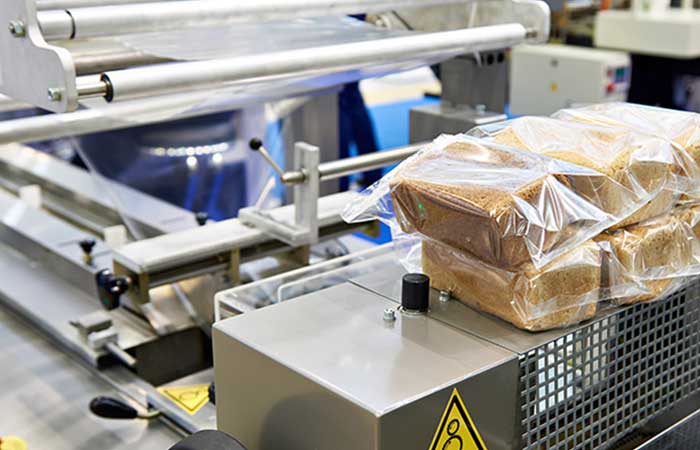The Ultimate Guide to Packaging Maker Fixing: Keep Your Workflow Running Smoothly
Comprehending the complexities of packaging machine fixing is critical for keeping ideal performance and minimizing disturbances. Routine maintenance not just expands the life of these makers however also addresses usual concerns that can hamper efficiency.
Importance of Normal Upkeep
Regular maintenance of product packaging devices is essential for ensuring optimum efficiency and longevity. By carrying out a structured upkeep schedule, operators can recognize possible problems before they escalate into considerable issues. This proactive strategy not only decreases downtime however also prolongs the lifespan of the devices, ultimately causing reduced functional costs.
Routine inspections permit for the assessment of important components such as seals, belts, and sensing units. Resolving wear and tear without delay prevents unforeseen failings that could interrupt manufacturing and lead to expensive fixings. Additionally, routine upkeep aids guarantee compliance with sector standards and policies, promoting a secure working environment.
Furthermore, upkeep tasks such as calibration, cleaning, and lubrication dramatically enhance device effectiveness. Enhanced efficiency converts to regular product quality, which is important for preserving client contentment and brand name reputation. A well-maintained packaging machine operates at optimal speeds and decreases material waste, adding to overall productivity.
Common Packaging Machine Issues
Packaging machines, like any complex equipment, can encounter a selection of usual concerns that might impede their performance and efficiency - packaging machine repair. One prevalent problem is irregular securing, which can cause product putridity and wastage if plans are not effectively secured. This typically results from misaligned components or used securing aspects
Another constant concern is mechanical jams, which can happen due to international items, worn parts, or inappropriate positioning. Jams can cause hold-ups in manufacturing and increase downtime, ultimately influencing general productivity. In addition, digital malfunctions, such as failing in sensors or control systems, can disrupt procedures and lead to unreliable measurements or irregular device behavior.
In addition, problems with item feed can additionally occur, where items might not be delivered to the product packaging area continually, triggering disturbances. Wear and tear on belts and rollers can lead to suboptimal performance, requiring instant attention to stop more damage.
Recognizing these common problems is vital for preserving the honesty of packaging operations, ensuring that machinery runs efficiently and successfully, which in turn assists in conference production targets and preserving item top quality.

Repairing Strategies
Efficient troubleshooting techniques are essential for without delay attending to problems that arise with product packaging makers. A methodical approach is essential for determining the source of malfunctions and minimizing downtime. Begin by collecting information about the signs and symptoms observed; this might include uncommon noises, operational hold-ups, or error codes presented on the maker's interface.
Following, refer to the maker's manual for repairing guidelines details to the design concerned. This source can provide useful insights right into common problems and recommended diagnostic actions. Utilize aesthetic inspections to look for loose links, used belts, or misaligned elements, as these physical variables typically add to operational failings.
Apply a process of removal by screening private equipment functions. As an example, if a seal is not creating correctly, examine the securing mechanism and temperature setups to determine if they satisfy functional requirements. Record each step taken and the results observed, as this can help in future fixing initiatives.
Repair vs. Replacement Decisions
When encountered with devices breakdowns, making a decision whether to fix or change a product packaging device can be a complicated and vital option. This decision hinges on several essential elements, including the age of the machine, the extent of the damages, and the predicted influence on functional effectiveness.
First of all, think about the device's age. Older machines may call for even more regular repair work, leading to greater collective expenses that can exceed the investment in a brand-new system. Furthermore, evaluate the severity of the breakdown. Minor issues can often be settled swiftly and economically, whereas comprehensive damages may necessitate a substantial monetary commitment for fixings.
Functional downtime is one more crucial factor to consider. Spending in a new maker that offers improved performance and reliability may be more prudent if fixing anchor the machine will create prolonged delays. Take into consideration the availability of parts; if replacement elements are tough to come by, it might be more tactical to change the equipment totally.
Ultimately, carrying out a cost-benefit evaluation that consists of both prompt and long-term ramifications will certainly help in making an educated choice that straightens with your functional objectives and budgetary constraints. (packaging machine repair)
Precautionary Procedures for Durability

Secret preventative measures include routine lubrication of relocating components, alignment checks, and calibration of controls and sensing units. Developing a cleansing schedule to eliminate debris and impurities from equipment can significantly decrease deterioration (packaging machine repair). In addition, monitoring operational specifications such as temperature level and resonance can aid detect irregularities at an early stage
Training personnel to acknowledge indicators of wear or breakdown is an additional crucial component of informative post preventive maintenance. Empowering operators with the knowledge to carry out fundamental troubleshooting can result in quicker resolutions and reduce operational disruptions.
Paperwork of maintenance activities, including service records and inspection searchings for, cultivates liability and promotes educated decision-making pertaining to replacements and repair work. By prioritizing preventive measures, businesses can guarantee their product packaging devices operate at peak efficiency, inevitably causing boosted productivity and reduced functional expenses.
Final Thought
In conclusion, the reliable repair and maintenance of packaging equipments are extremely important for sustaining operational performance. Routine maintenance mitigates the danger of common concerns, such as irregular sealing and mechanical jams, while organized troubleshooting methods facilitate punctual resolution of malfunctions. Mindful consideration of fixing versus replacement choices contributes to cost-efficient administration of resources. By carrying out preventative actions, businesses can boost equipment longevity and make sure uninterrupted efficiency in packaging operations.
Understanding the complexities of product packaging equipment repair is important for preserving optimum efficiency and minimizing disruptions.Routine upkeep of product packaging equipments is crucial for guaranteeing ideal efficiency and durability.Product packaging equipments, like any kind of complex machinery, can encounter a variety of common issues that may impede their performance and effectiveness. If repairing the device will trigger extended delays, investing in click here for info a new machine that offers enhanced efficiency and reliability might be more sensible.In verdict, the reliable upkeep and repair service of product packaging devices are critical for sustaining operational performance.